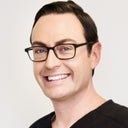Thank you for your question ogkala. I understand your concern. Botox is a purified protein used to address wrinkles associated with facial expression. When injected into the skin Botox will relax the muscles and smoothen out the overlying wrinkles. The most common areas of treatment are in the upper face. These include the horizontal lines seen on the upper forehead when one raises the brows, the vertical lines seen between the brows when one frowns (frown lines), and the crow's feet seen around the eyes when one smiles.To understand the details of exactly how Botox works requires a small amount of anatomy and physiology. Muscles that are used for facial expression (examples of skeletal muscles) contract when there is an innervation by a nerve, meaning that the nerve sends a signal to the muscle telling it to contract. This occurs at a point called the neuromuscular junction, the attachment of the nerve to the muscle. The nerve releases a neurotransmitter called acetylcholine into the space between the nerve and muscle called the synaptic cleft. The acetylcholine then binds to the membrane of the muscle. This binding triggers the muscle to contract. Botox prevents release of acetylcholine from the end of the nerve into the synaptic cleft. This prevents the signal from being passed to the muscle and it prevents the muscle from contracting, thereby relaxing the muscle.Botox was originally obtained from the bacterium Clostridium botulinum, the bacteria that causes botulism. These bacteria can be found in certain foods that are not properly preserved. When it is ingested the bacteria multiplies and spreads through the bloodstream releasing a protein called botulinum toxin, the active ingredient in Botox. As the bacteria multiply more and more of the toxin is released. The botulinum toxin attaches to the nerves on large muscles such as those responsible for breathing or those in the limbs. This makes it difficult to breath and perform activities such as walking. The live bacteria are required to multiply and continue releasing large amounts of the toxin. In the absence of the bacteria, as when Botox is used for cosmetic purposes, more toxin is not produced. Also, the amount of toxin used for cosmetic treatments is miniscule compared to the amount required to produce effects such as difficulty breathing. Finally, the minute amount of Botox used in cosmetic treatments is not enough to pass into the bloodstream and spread to other muscles, as evidenced by the lack of systemic side effects.Botox some in a powder in small vials on dry ice or a cold container. Upon receipt from the manufacturer the product is refrigerated or frozen until it is used. Per the manufacturer’s guidelines, Botox is prepared by reconstituting the powder with preservative-free normal saline. I prepare the product using preserved saline which allows for greater comfort during injection and for the product to last longer. The guidelines call for use of 2.5 mL of saline for 100 units on Botox or 1.25 mL of saline for 50 units of Botox, which yields 4 units per 0.1 mL. I use these volumes, but some doctors prefer to use more or less to make the product more dilute or more concentrated. When the product is more dilute, it is easier to use smaller doses which are generally required in the lower face. On the other hand, when the product is more concentrated, it is less likely to spread. Because of variability in preparation, the terms used for dosing are units, not volume. This is because the same number of units can be administered with different volumes of product depending on the preparation.





